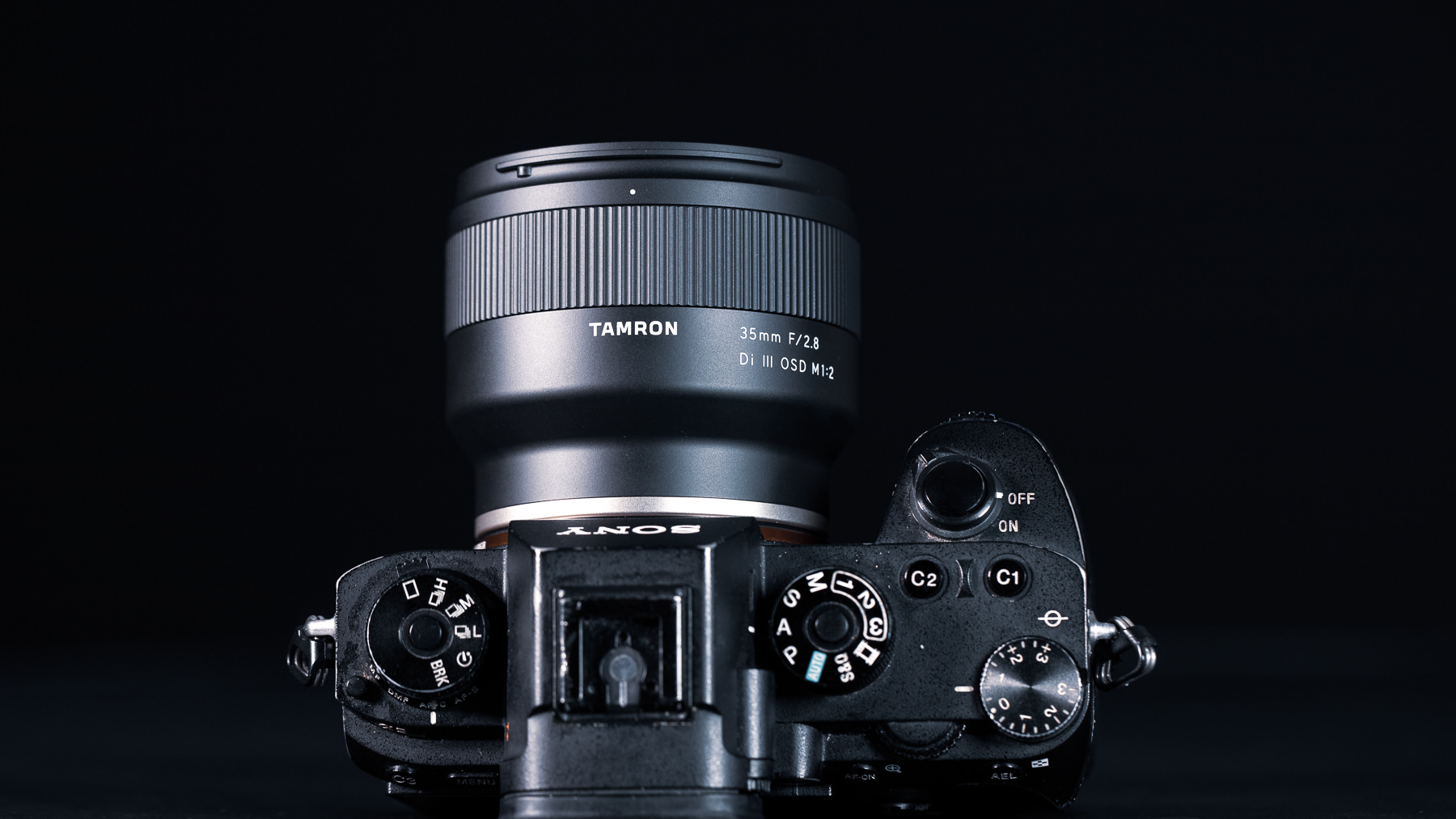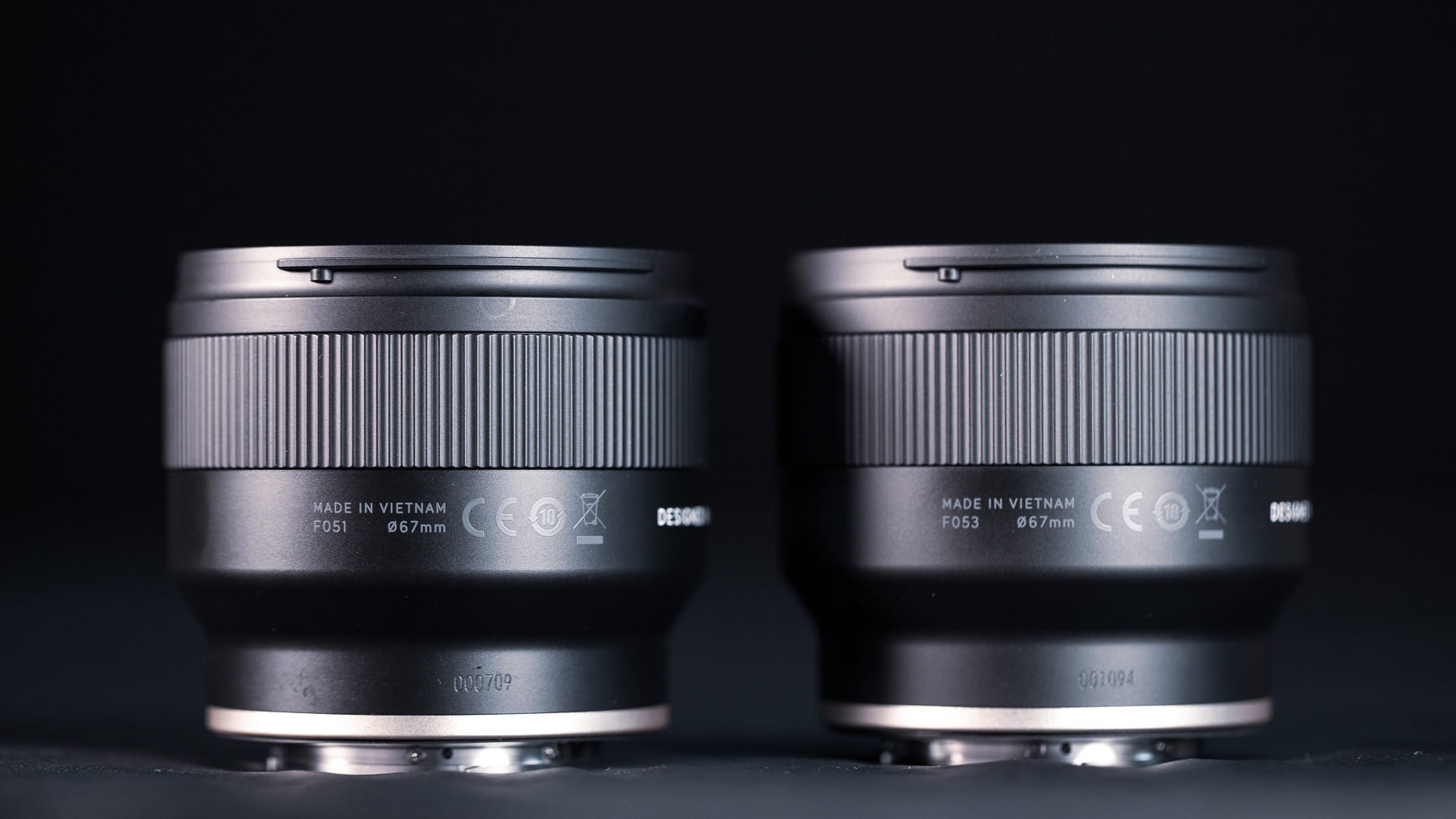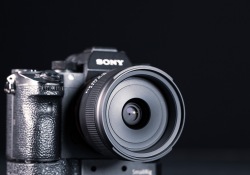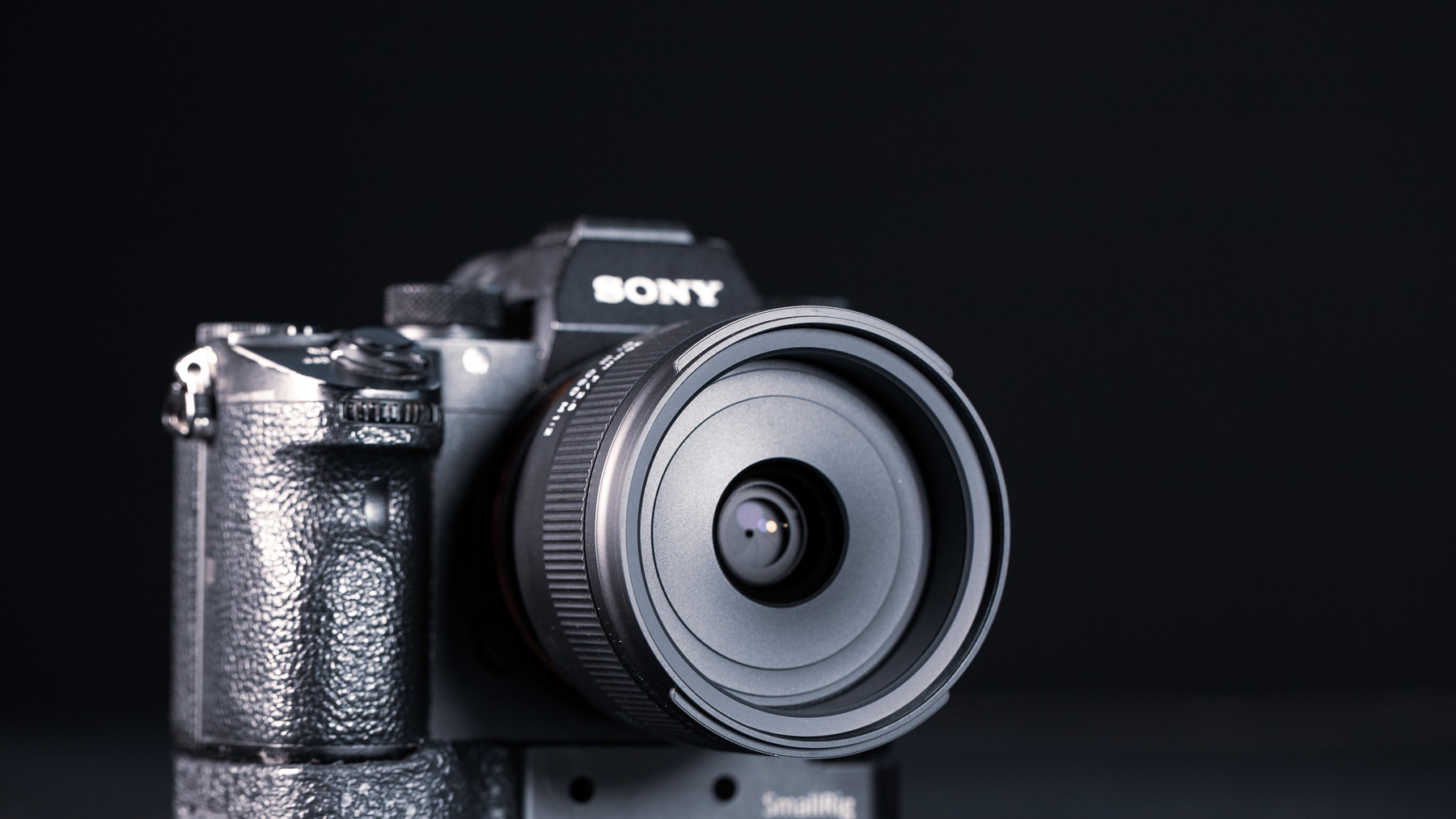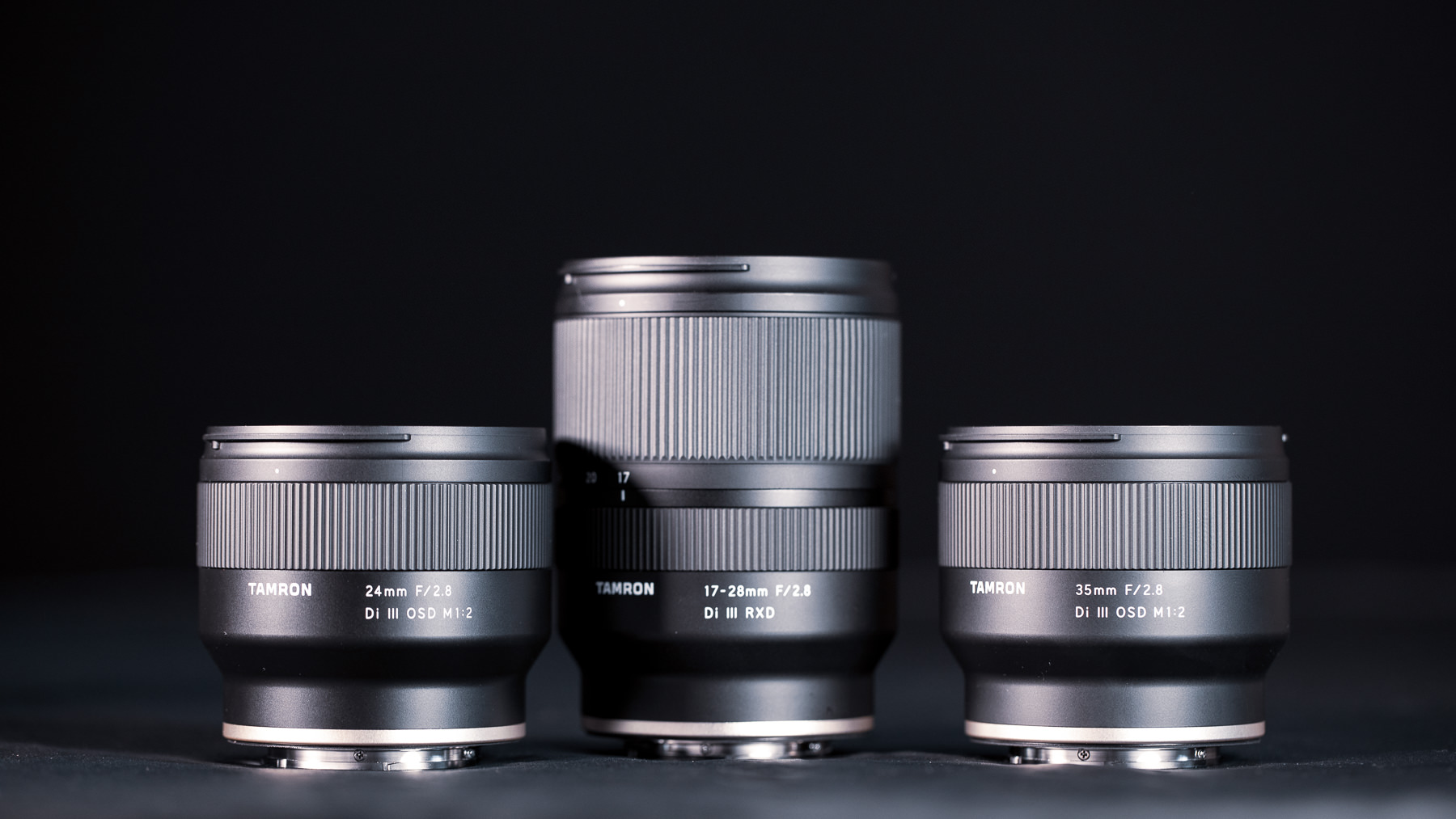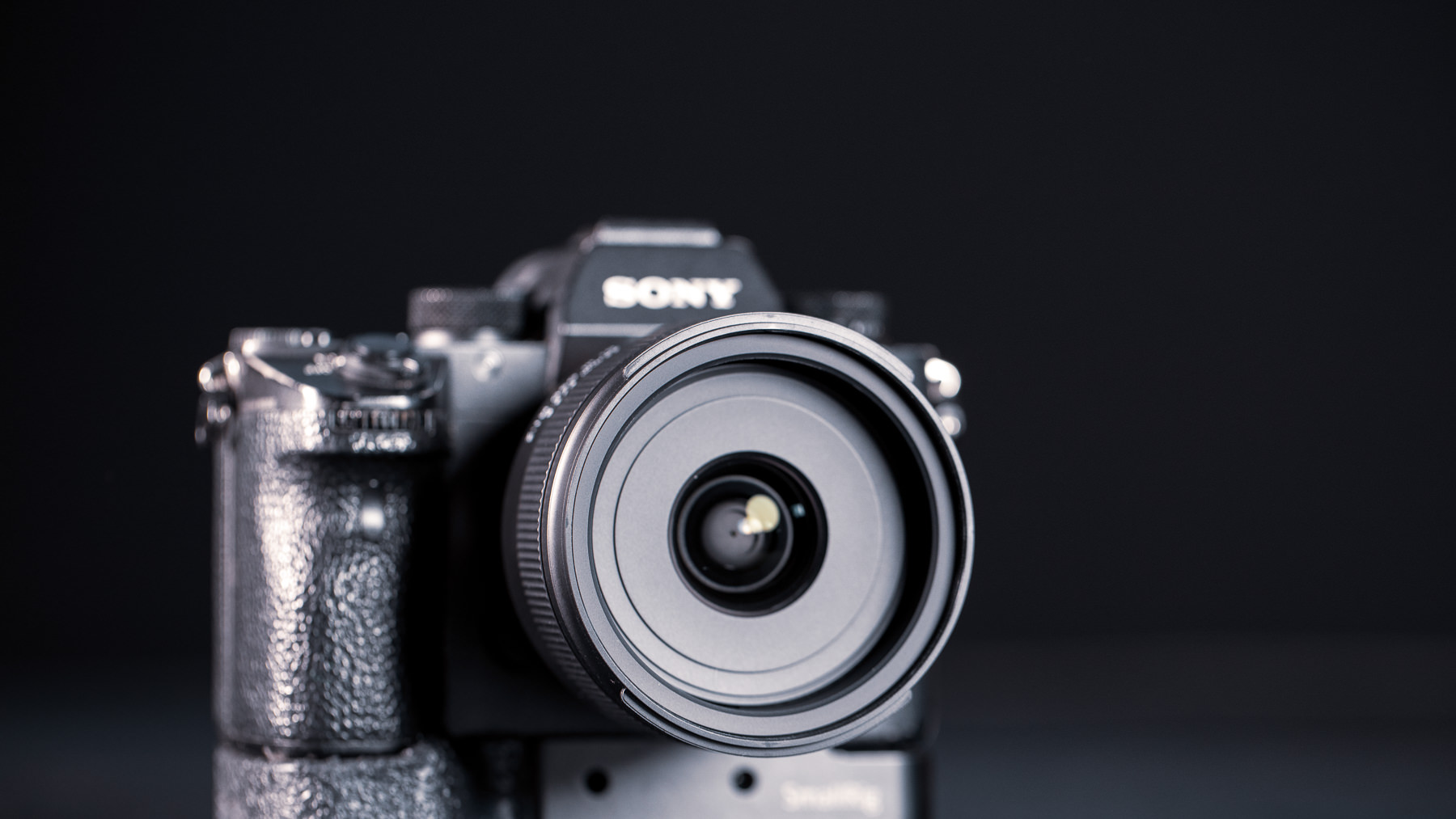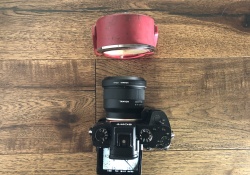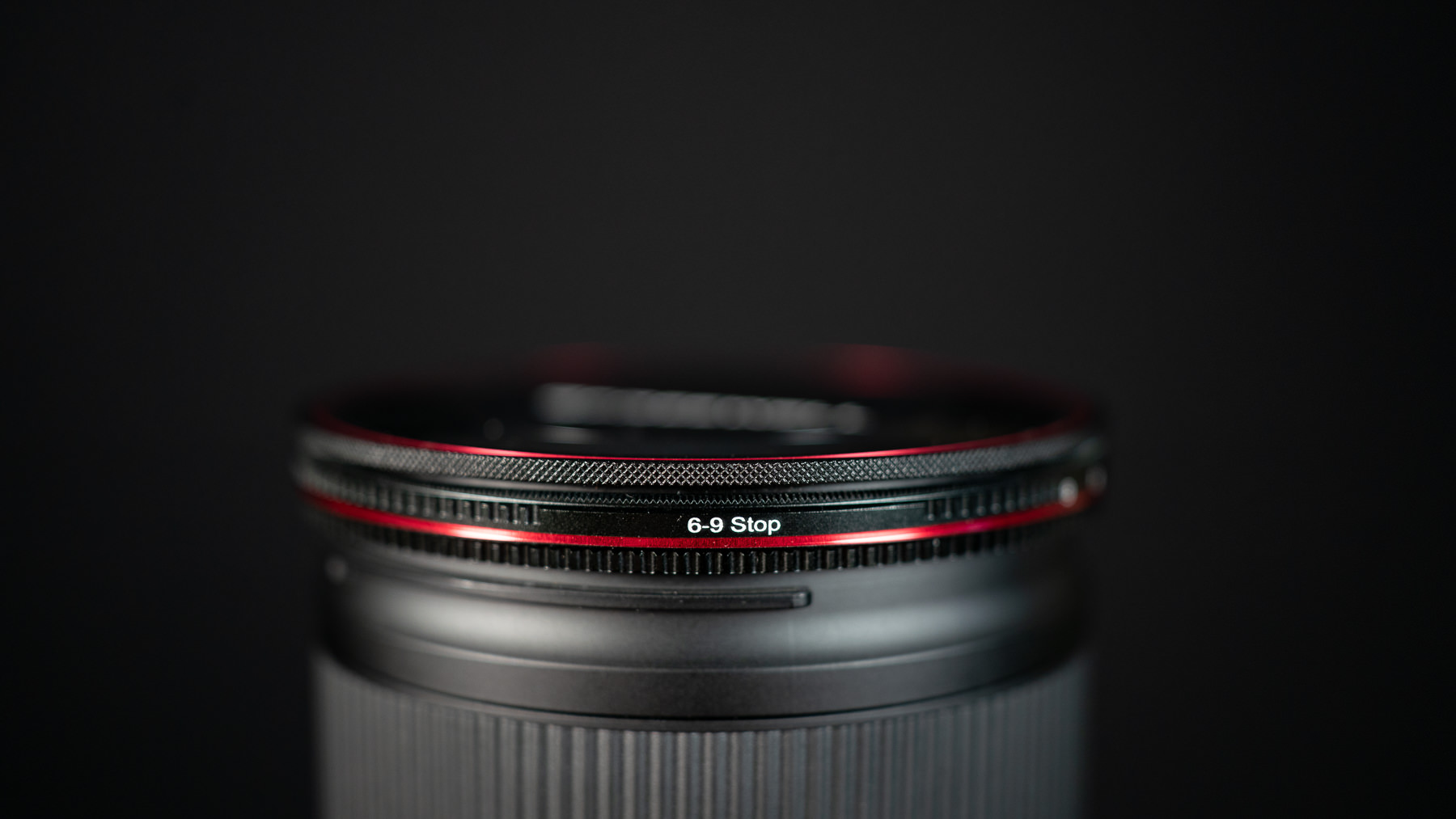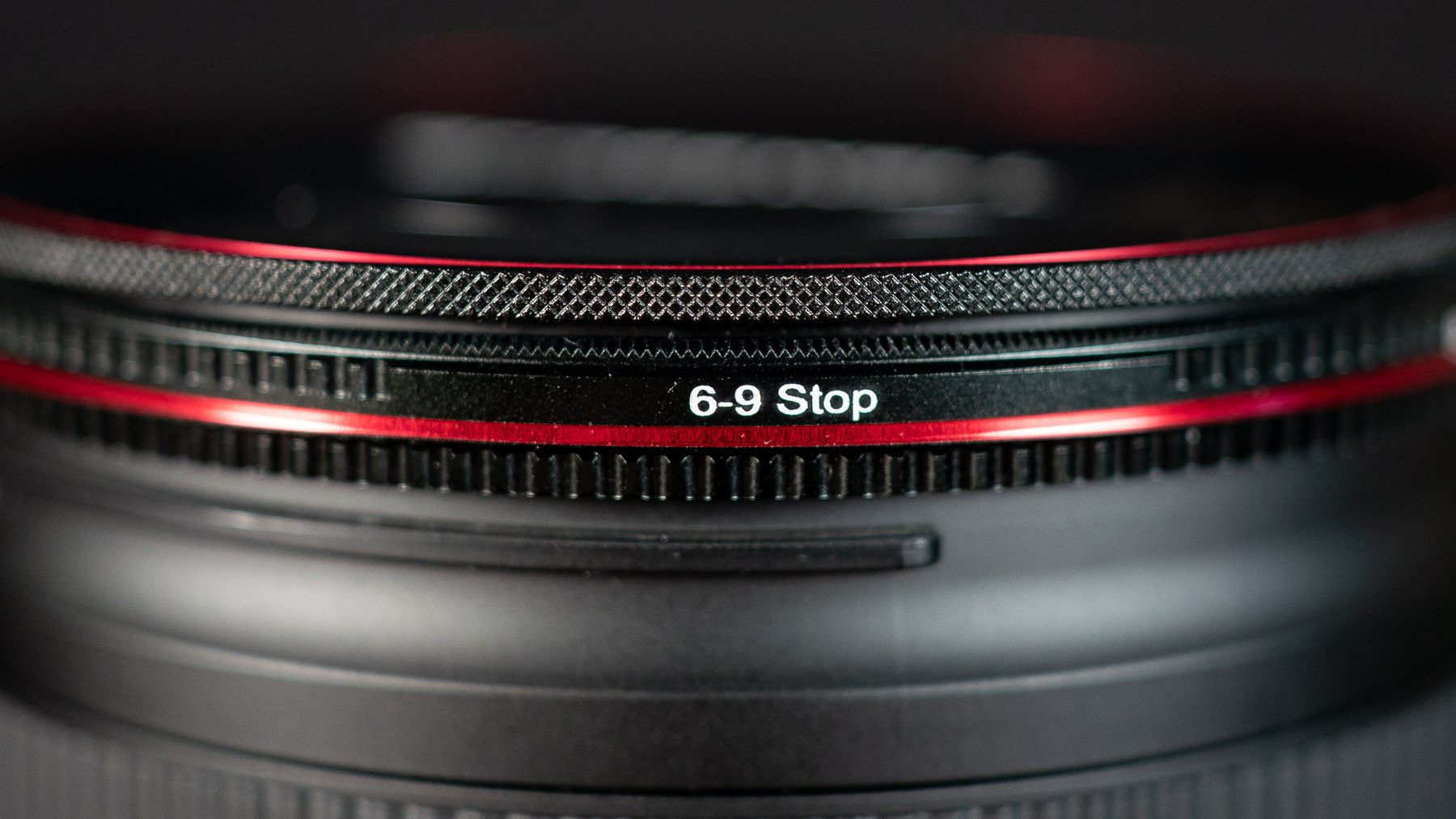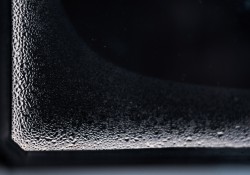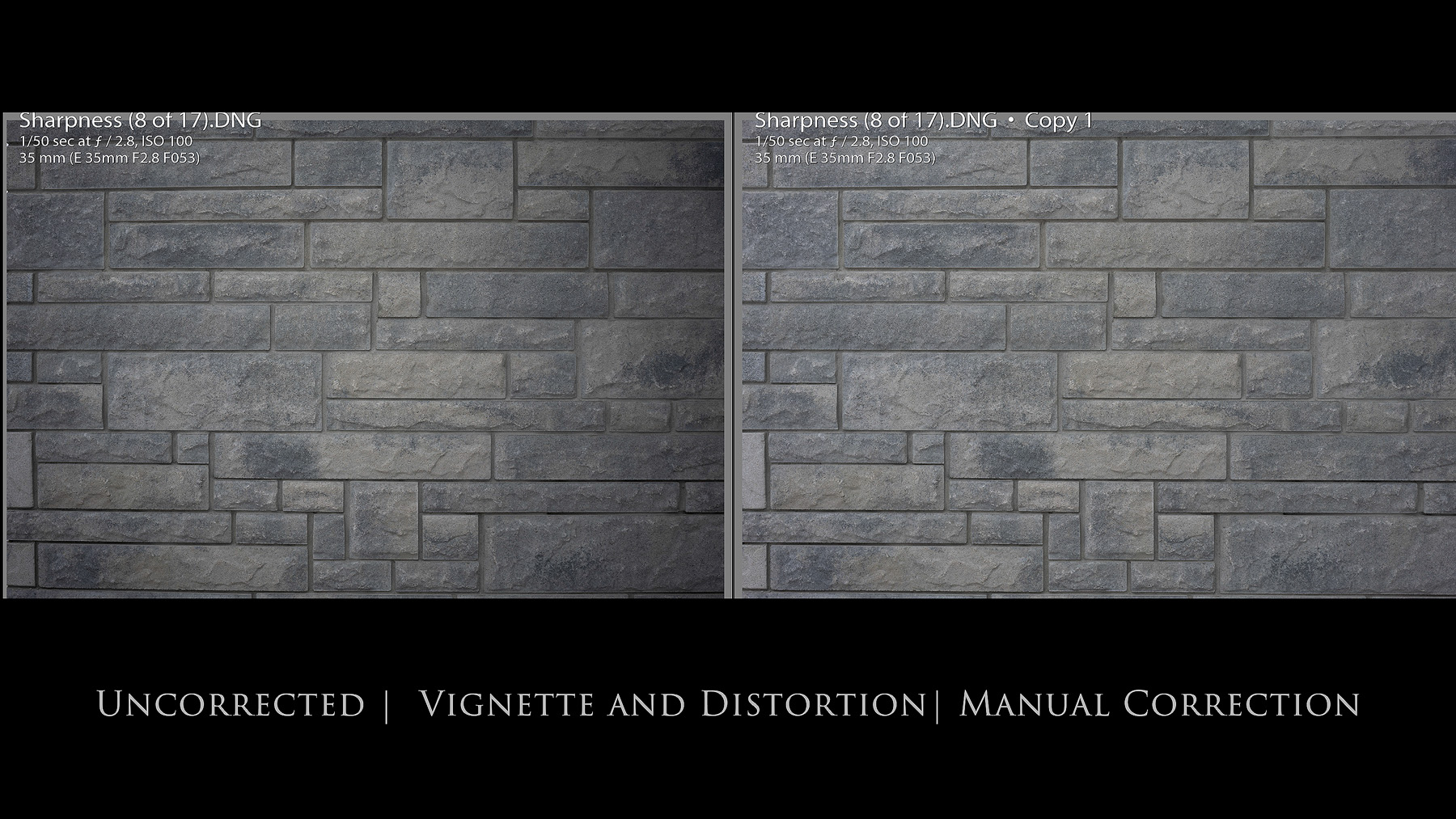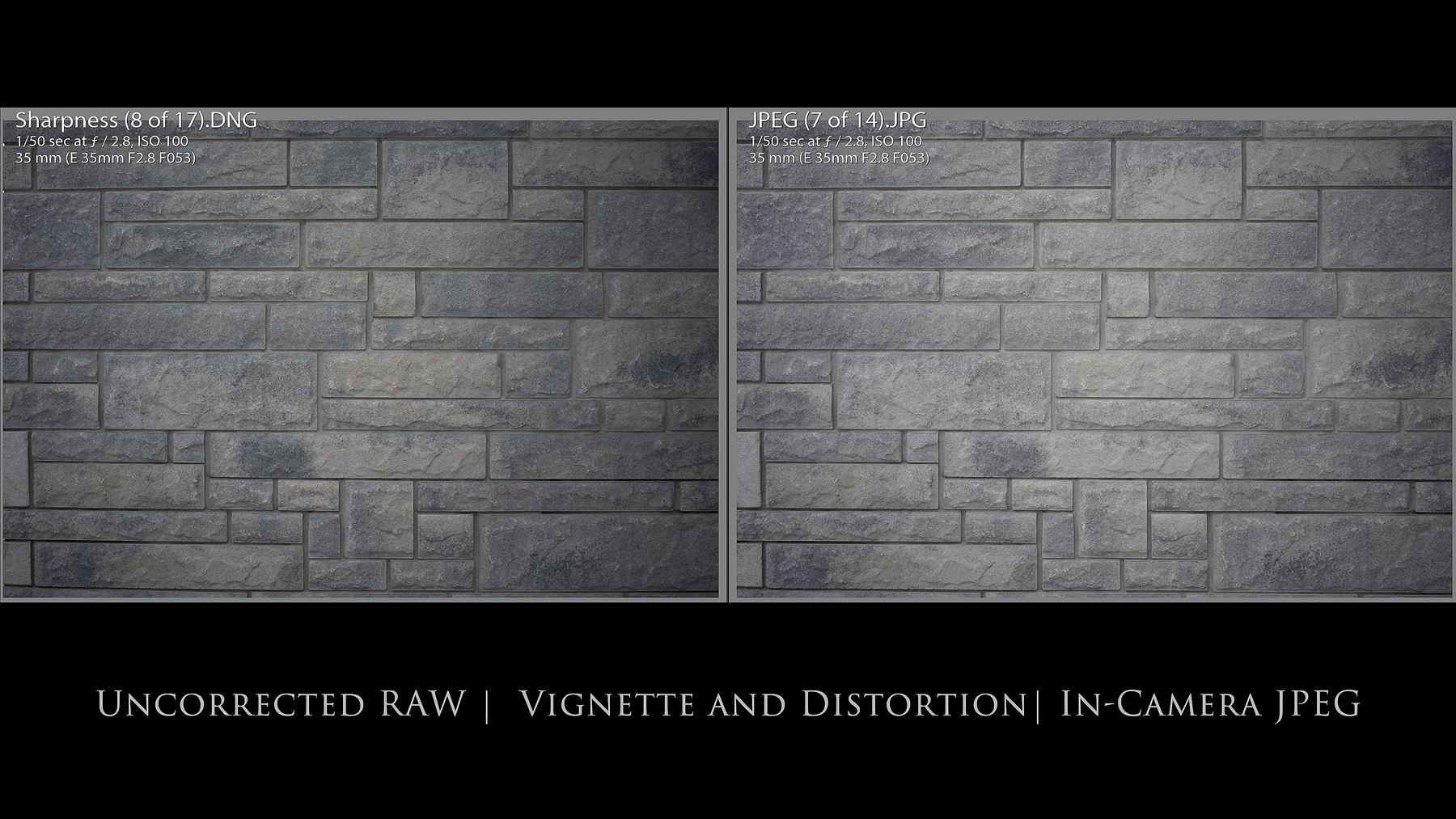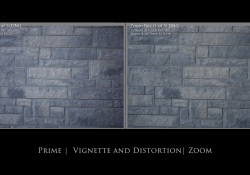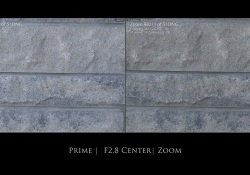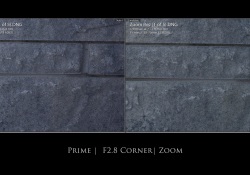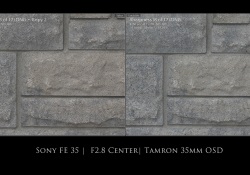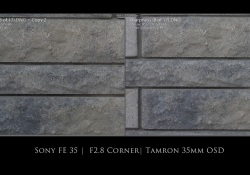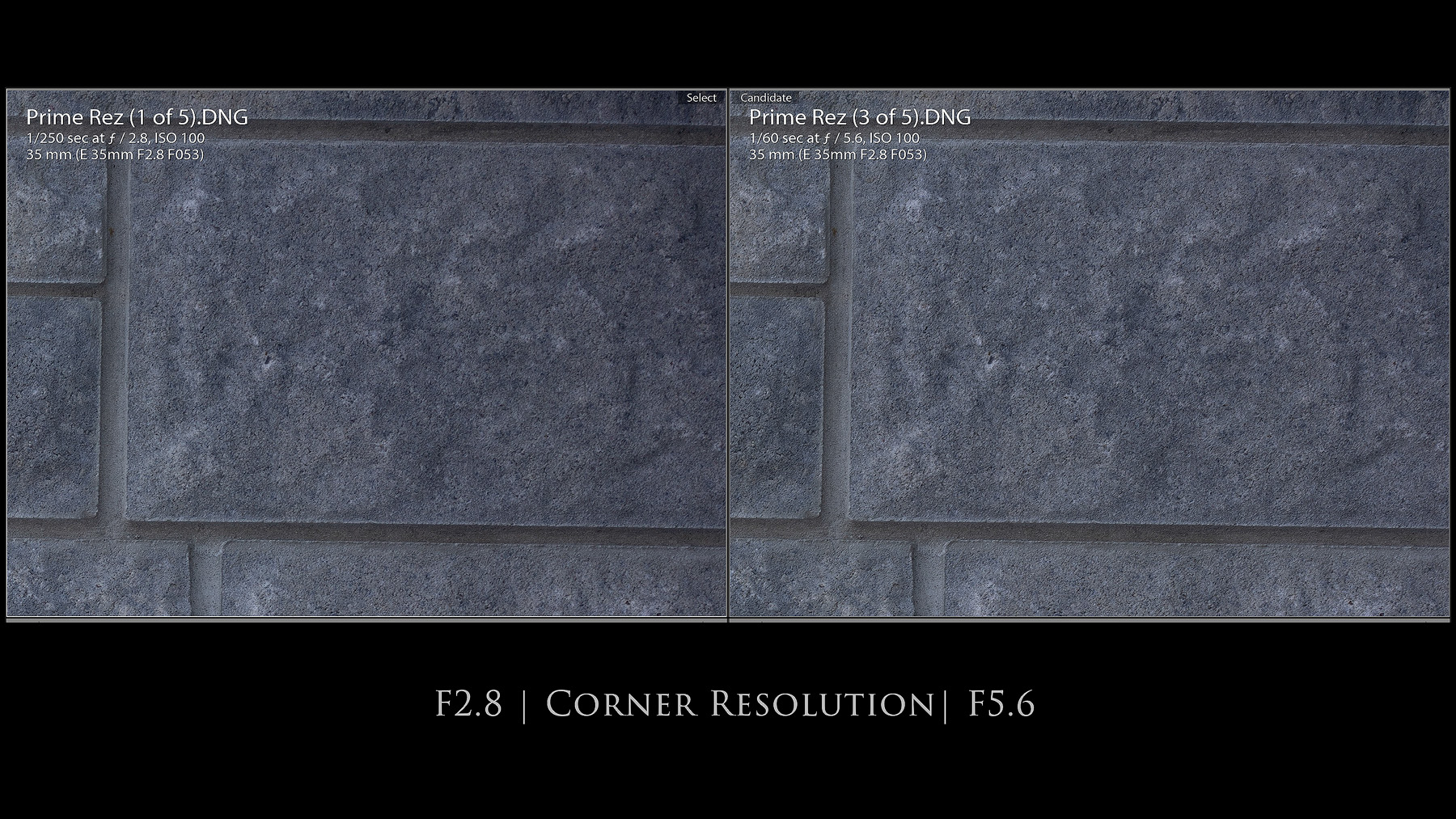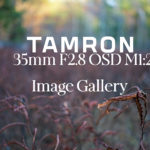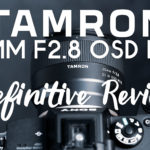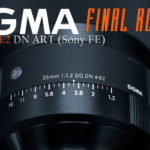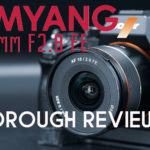The Tamron 35mm F2.8 OSD M1:2 (F053) is one of a trio of new prime lenses for Sony FE recently announced and released by third party lens maker Tamron. Tamron first entered the FE space with two zoom lenses (17-28mm F2.8 RXD and 28-75mm F2.8 RXD) which have been very well received, and now Tamron is following up with not only the recently announced 70-180mm F2.8 RXD zoom but also three prime lenses (20mm, 24mm, and 35mm) that have only a moderately wide aperture (F2.8), but sport nicely compact, lightweight bodies and one other trick up their tiny sleeves: they are all 1:2 Macro lenses (one half life size). These are lenses that are somewhat similar to a lens like Zeiss’ classic 50mm F2 Makro-Planar…though with a smaller maximum aperture and costing less than a third of the price.
I always have a few reservations when examining a prime lens that doesn’t offer an aperture advantage over a zoom lens, but we’ll see how each of these primes compares to Tamron’s zooms that cover the same focal lengths in the review of these lenses. One thing is sure: the macro(ish) performance of these lenses at least gives them a “killer app” not matched by the zoom lenses…and Tamron has priced them to move at $349 USD each. I started my series of reviews with Tamron 24mm F2.8 OSD first, as the 20mm is taking a little longer in development, and, in many ways the 35mm is the most conventional of these three focal lengths. In fact, the 35mm faces the most challenges, as there are far more options at the 35mm focal length (8 autofocus options on the Sony FE platform), and most of them sport a larger maximum aperture than this one and are available at a wide range of price points. The full name of the lens is the Tamron 35mm F2.8 OSD Di III M1:2, which is a mouthful, so we’ll refer to it by it’s internal code name (F053) instead. Here’s what those initials mean: OSD = Optimized Silent Drive (the type of focus motor), Di III = designed specifically for mirrorless (in this case Sony Full Frame E-mount), and M1:2 =1:2 Macro…which is one of the main reasons why the F053 might be worth considering even with so many other options available.
I’ve looked at the 24mm and 35mm lenses at the same time (they are releasing at identical times), and while researching, I’ve found an interesting quirk connected to that internal code of F051. The yet-unreleased 20mm F2.8 OSD has a lens designation of F050, the 24mm is F051, but the 35mm (which I have on hand) is code-named F053 (not F052).
Hmmm…
This makes me suspect that another lens (most likely a 28mm) is yet to come in this series. 28mm is a great focal length…and there aren’t a lot of options there, so this could potentially be a solid move for Tamron.
Is there a reason to choose this little 35mm F2.8 prime over, say, the excellent Tamron 28-75mm F2.8 RXD which covers this focal length along with many others (you can see my review here)? Ultimately that’s a question that only you can answer, but I’ll do my best to help answer that question in this review by doing some direct comparisons to that lens.
I’ve done the review on both Sony a9 and Sony a7RIII bodies…with a peek at how that magnification is affected by the crop factor on the Sony a6500 as well. Let’s jump in and explore whether or not the Tamron 35mm F2.8 OSD makes any sense for you.
Follow Me @ Patreon | My Newsletter | Instagram | Facebook | Twitter | Flickr | 500px
Tamron F051 Build, Handling, and Design
Part 1 of my video review covers Build and Handling + Autofocus Performance, so you can check that out here:
As mentioned previously, the F053 is designed specifically for Sony FE, though it can also be used on Sony’s crop sensor E-mount cameras where it has an equivalent angle of view of roughly 52.5mm. This makes this a very interesting focal length in both full frame and APS-C modes where shooting stills or doing video work, as 35mm and 50mm(ish) are two of the most popular focal lengths for a reason.
All of Tamron’s development to date for Sony FE has come without their popular VC (Vibration Compensation) system and instead rely on Sony’s Steadyshot Inside (IBIS) for stabilization. This has allowed Tamron to have less complex lens design and really focus on keeping things smaller and lighter, which is often the forgotten element of modern lens design. The F053 weighs only 7.4 oz (210 g), which is incredibly light for a full frame optic.
As noted, there are a number of other autofocusing 35mm options on Sony, including three from Sony (F1.4, 1.8, and 2.8 options), two from Samyang (F1.4 and F2.8), and two from Sigma (F1.2 and F1.4) along with a variety of manual focus options. The cheapest of these is (at the moment) available for $229; the most expensive of these comes in at $1499. There are a couple of F2.8 options that are smaller and lighter still; the Samyang AF 35mm F2.8 is only 85.6g!
That being said, the Tamron does sport a few extra strengths compared to the competition. The Samyang AF 35mm F2.8 is incredibly small, light, and inexpensive, but it lacks weather sealing and has a very poor 0.12x magnification. The even harder sell is the Sony Zeiss Sonnar 35mm F2.8, which costs more than twice as much and shares that poor 0.12x magnification figure. The F053 has both weather sealing and a 0.50x magnification, which opens up a whole new world of usefulness for the lens. It is small enough (D 2.87 x L 2.5″ / 73 x 63.5 mm) and inexpensive enough ($349 USD) that neither of these factors should be detrimental.
Tamron has given us fairly strong value for money when it comes to the build of these little primes. They all have a LOT of shared design elements with each other and even with the FE zooms. One shared design element is the inclusion of weather sealing, starting with a gasket at the lens mount, several internal seal points, and a fluorine coating on the front element to resist fingerprints and watermarks (this also makes the front element easier to clean).
Few lenses at this price point offer that, and certainly the inexpensive first party options on any system would not. So far Tamron has included this on all of their FE lenses…and it’s very welcome! Also included is a lens hood, which in this case is a rather interesting one. It quite shallow and closed in the front except for a rectangular cutout reminiscent of an “anamorphic” type lens. The front of this hood is threaded so that filters can be attached right to it if you want to use both filters and the lens hood.
Another shared design element is that every FE lens thus far has had a shared 67mm front filter thread. There are both pros and cons to this. The primary con is that this shared design element is a limiting principle in the size/shape of a lens. This lens probably could have been smaller than what it is. At 2.87″ (73mm) diameter, the F053 is over 10mm wider than either of the other 35mm F2.8 options, and the 67mm filter thread compares to only 49mm on them. The overall length of the lens is modest, but it could have been narrower than what it is. Fortunately the short, squat look is a rather attractive one in a lens.
The main upside (and it’s a big one) is similar to what Zeiss has done with the Loxia series. That shared diameter and front filter thread means that one set of filters can easily be shared across all the Tamron lenses (and in a very common size), and also anything like gearing or other accessories can be shared in a similar fashion. The shared filtering is a rather big deal to me, as I’ll obviously invest my filter money on the most commonly shared size, and this means that I’ll have a wide range of filters available to use with the lenses (and could potentially bring along one set of filters).
You’ll have to decide whether this is a net negative or net positive for you, but it is clear that Tamron does have a design philosophy for these lenses.
The physical design is also quite similar. These little primes carry a strong family resemblance to the FE zooms, with a body made of mostly engineered plastics around a lightweight metal mount. This is finished in a satin black with a platinum-color (“luminous gold”, according to Tamron) accent ring near the lens mount. There is white lettering on the lens barrel with lens designation and other information, and no switches to be seen anywhere. I do prefer having an AF/MF switch, but you’ll have to rely on controlling that from within the camera.
There is a ribbed focus ring a few centimeters wide near the front of the short lens. The focus ring moves fine…though with no particular smoothness or quality. It feels fairly “plasticky” and not mechanically refined. It mostly just does the job in a fairly uninspiring fashion. You’ll never mistake the action for a Loxia lens! While focusing the selected area of the image will automatically magnify to help you to visually confirm focus.
If you look at the front of the lens while focusing, you will find that the front element group is the group that moves to achieve focus, so you will see some movement forward and backwards, though all within the lens housing, meaning that this is still technically an internally focusing lens, as the the lens does not change length during focus. There are a few seal points near this area according the diagram, so Tamron has taken steps to assure that dust won’t enter here. If you have any further concerns, however, adding a protection filter is always an option.
The F053 can focus down very closely (5.9″ or 14.99cm), which is the primary reason that it can achieve such a high magnification figure. It has the longest working distance of the three Tamron primes due to have a longer focal length, but, as you can see from the photo below, you are still very close to your subject at that distance. This is more than twice as close as what the competing lenses can focus down to (30cm). Just know that you will be VERY close to your subject when shooting at MFD, as that figure is from the sensor of the camera. Here’s what that looks like, what kind of magnification you can achieve, and an example of a wide open macro shot.
You will have to be careful to avoid shading your subject with the lens, and you’ll obviously need fairly good light on your subject, too. Of the three focal lengths, 35mm is only one that is used conventionally for a macro lens (I’ve reviewed several 35mm 1:2 and even 1:1 macro lenses), and that is mostly because wider focal lengths tend to introduce more perspective distortion. The 35mm focal length, however, can be an interesting one for food or product photography when a little wider perspective is desirable. Here’s a look at a handheld (and wide open) product shot of a filter that I was testing:
If you attach the F053 to an APS-C camera (or shoot in crop mode), that magnification level rises even higher perceptually to something akin to 1:1. The first shot is in full frame mode; the second is an APS-C mode. Nothing has moved in between the shots:
In this case the camera has just cropped into the image, but if one were using the lens on an APS-C camera the additional magnification becomes even more compelling and useful. The “macro” capabilities (many contest if 1:2 constitutes macro) of the lens are a definite selling feature, and gives you many additional creative options when photographing different scenes…and image quality is quite good at close focus distances (any distance, really).
The lens has an aperture consisting of seven rounded blades. You will definitely see some cat eye shapes near the edges of the frame. It’s slightly better at F4 (though not perfect), but by F5.6 you (unfortunately) start to see shape of the aperture blades. The geometry is consistent, but it’s not really round.
Examining the bokeh circles reveals a fairly clean result with a bit of busyness inside but no concentric rings (onion bokeh). The outer line isn’t overly defined, which helps real world bokeh look pretty good.
Overall, the lens design here is clean and simple. There are no obvious bells and whistles, though the nice amount of sealing throughout the lens is a great selling point.
Tamron F051 Autofocus Performance
The OSD in the lens designation stands for “Optimized Silent Drive”, and, as with other lenses that I’ve reviewed with this particular focus system, it is not a highlight for me. It’s worth noting that Tamron has released more named autofocus systems than any lenses maker I’ve ever seen before. USD, RXD, OSD, HLD, DC, and PZD are some that spring to mind from reviews in the last few years alone. That’s not to say that other lens makers don’t experiment with focus motors; it’s just that Tamron likes to name them all! OSD is a somewhat misleading designation, as while I’ll cede the O (optimized) and d (drive), I’m not willing to give them the S (silent). While the focus motor is not like the old scratchy, buzzy micro-motors of the past, there is definitely some clicking that you will hear during focus…particularly when shooting in AF-C and as the focus motor makes tiny adjustments to accommodate for movement either of the camera or the subject. The RXD motors in the FE zooms are quieter and smoother by comparison.
This is, however, a better application of OSD than what I saw in either the 17-35mm F2.8-4 or the 35-150mm F2.8-4 (an otherwise brilliant lens!). The reasons for this is that on DSLRs where manual focus is typically accomplished by a direct coupling to the lens elements, the OSD focus motor had two major limitations: 1) It did not allow for full time manual override, and, since this is rare these days, you would often grab the focus ring and start to turn it and then feel like you were stripping the gears. If you switched to MF, however, there was no damping on the focus ring at all, so you had no resistance, making precise focus difficult. 2) There was no distance window on those lenses, and, because the viewfinder was optical, there was no electronic distance calculator. Manual focus just wasn’t a great option due to the nature of the OSD.
Fortunately those major problems are solved here. Because mirrorless lenses are designed for manual focus input to be routed through the focus motor (not a direct coupling), manual override is available when in DMF mode. All focus modes are supported along with every aspect of Sony’s hybrid AF system (more on Eye AF in a moment). Feel during manual focus isn’t exceptional (ever so slightly “gritty” feeling), but neither is it poor, either. During MF there will be both a distance scale (in either the viewfinder or on the LCD) along with an automatic magnification of the focus area to help visually confirm correct focus. As always, of course, you also have the option of employing Sony’s manual focus aids in your camera like colored overlays. Functionally OSD works much better on mirrorless than it did on DSLRs.
But the function of focus still lags behind the RXD focus system of, say, the 28-75mm F2.8 RXD (which covers this focal length). The OSD motor here on the prime lens is noticeably slower and less smooth than the near-instant focus on the RXD lens. It’s fast enough for most situations, but major focus changes feel deliberate rather than speedy. I think that the RXD motors have more torque and are thus able to focus faster and quieter. They are probably also more expensive to manufacture, which is probably (my guess) as to why they aren’t being employed here.
On a positive front, I had largely excellent focus results with the F053. In real world situations focus was confident and I didn’t run into the pulsing that I sometimes get with wide angle lenses on Sony when shooting landscape scenes with all focus points active.
Low light sensitivity was not exceptional (probably due to the only moderately wide maximum aperture). In my low light torture test I was unable to lock focus with the F053 with either my a7RIII or my a9, and I was able to lock focus in the same situation with the Sony FE 35mm F1.8. I also wasn’t able to lock focus with the 17-28mm F2.8 RXD, which is what makes me think that this more about maximum aperture than anything else. When a camera has a lens with a larger maximum aperture attached, it is able to open the aperture up during focus and let in as much light as possible, which helps the AF system achieve focus. In this case the limiting principle is the F2.8 aperture which cannot be opened any wider, so the Sony had a 1 1/3 stop advantage of light, which means that it can let in more than twice as much light to help achieve focus. This may be a consideration if you are often shooting in very low light conditions, though in less extreme, real world situations I didn’t really have any problems.
Eye AF worked quite well overall, with both human and pet Eye AF locking accurately onto the subject.
In short, I had no concerns with the accuracy of the focus (it was excellent), but focus speed left a lot to be desired. It was rather like what I found with the Tamron SP 45mm F1.8 VC. I got the job done with it, but there were definitely moments where I was wishing for more speed.
Finally, let’s talk about video for a moment. The F053 will not be a top pick for video shooters who are using on board audio recording. You will DEFINITELY hear some clicking through the onboard mic as the lens makes adjustments. Focus pulls are smooth and didn’t really show pulsing or hunting, but there is a clicking sound that occurs as the motor spools up the torque to start the elements moving for a focus pull. If you are recording audio separately, this isn’t a problem, but you will definitely hear it if you’re recording on camera audio.
Footage from the lens looks great as it is actually optically very strong.
Where I will criticize, however, is that when filming a fairly static scene (like one of my YouTube presentations), the focus doesn’t always stay still. It doesn’t do major pulses like some lenses, but the F053 is guilty of some unnecessary microadjustments where you can see tiny pulsing on occasion. I used it in one segment where I was demonstrating a product up close, and there was a near constant parade of tiny (and largely unnecessary) adjustments. The fact that you hear a little click when this happens also serves to draw your attention to it. My most-used video lens for my channel is the Tamron 28-75mm F2.8 RXD, which is definitely a better choice for video work for this reason. It stays very solid and doesn’t make unnecessary adjustments. The fact that the autofocus is essentially silent is also a big asset.
I did some work on a gimbal, however, and I was perfectly happy with the footage and quality of focus. My conclusion for both videos and stills is that the OSD focus motor works fine for the vast majority of work, but it isn’t as refined in the more difficult margins as some better focus systems including Tamron’s own RXD. To be fair, this is a budget lens, but so is the Samyang AF 45mm F1.8 and (to a lesser extent), Sigma’s 45mm F2.8 (two somewhat similar lenses for Sony that I’ve reviewed in the past six months) and I would call the focus system in both those lenses more sophisticated in operation.
F051 Image Quality
Part 2 of my video review breaks down Image Quality, Video Performance, and delivers a final verdict. Check out this video to see these results interactively:
There’s a lot of good news to report on this front, as Tamron has does a great job of delivering excellent image quality out of this little prime lens. The formal tests are done on the a7RIII (42MP) with real world tests down on either the RIII or the a9.
There is a small amount of barrel distortion (a +4 in Lightroom/ACR) that has the slightest wave to it. It corrects quite well via the in-camera profile for JPEGs or Video footage, though at this point there isn’t yet a standard profile in Adobe. There is also a fair amount of vignette that ends quite far into the frame. I used a +46 for vignette amount to correct and had to slide the Midpoint slider all the way to the left to get an even illumination across the frame.
Both JPEGs and video will receive automatic corrections (if enabled), and the in-camera profile produces very clean JPEG results:
Though you can’t see it here, obviously, video is similarly clean.
So how does it compare to the Tamron zoom lens that competently covers this focal length? A few general observations before we jump into the “nitty-gritty” of resolution.
- The prime lens is a little cooler in color temperature than the zoom at equal settings
- The prime frames wider than than the zoom set at 35mm…several mm wider
- The prime has a tiny bit less distortion
- The zoom has a bit less vignette
When comparing the center of the frame we find that the F053 has slightly brighter results with a little more contrast. Resolution is more similar than different, but there might be a slight edge for the zoom. The prime has slightly more resolution and contrast at the mid-frame edge and in the extreme corners. The zoom seems to exhibit a bit more field curvature.
How does this look in the real world? Remarkably good, in fact. Look how sharp and contrasty the crop from this photo of my cat is:
There are also might be some question as to how this compares to the new Sony FE 35mm F1.8. I happened to have one on hand for review at the same time as the F053, and, when comparing the two lenses side by side at F2.8 I discovered that they were very close in performance but with the edge going to the Sony. The difference, however, was probably not significant enough to be perceived in most any real world situation. Both are nicely sharp in the center of the frame with the corners lagging a bit behind.
There is very little change when stopping to F4. I see a mild improvement in the mid-frame edges but little change elsewhere. There’s a more significant improvement at F5.6, where center resolution and contrast is now spectacular and corner performance is now quite strong.
It’s worth nothing that vignette has only marginally improved through stopping the lens down, so that is something you will deal with even with slightly smaller apertures. I checked back in with the zoom and found a near identical performance at F5.6 save that the zoom showed less vignette.
At landscape apertures the F053 is just fantastic. Tons of detail and contrast, great color, and beautiful colors. This does NOT feel like a budget lens.
While I haven’t compared them myself, I did watch Chris and Jordan from DPReview do a comparison between the expensive Sony Zeiss Sonnar 35mm F2.8 and the F053. While the autofocus was an easy win for the Sony lens (unsurprising), the Tamron was the clear winner when it come to the optical properties of the lens and was the one they awarded the win to in the end. Very interesting.
While doing these tests I also noted that both lateral and longitudinal chromatic aberrations are extremely well controlled, with very little purple or green fringing showing up in real world images. This was about as much as I saw in this wide open show with brightly sunlit ice on a branch:
Another area of tremendous strength is the flare resistance of the F053. Wide open there is little to no veiling or ghosting. I was able to get a tiny bit of ghosting stopped down a bit, but the BBAR coatings are doing a great job. Some of these photos will also include the sunburst effect from the lens, which is fairly good though with a little less definition in the blades than what I would like.
The worst-case scenario did not involve the sun but the moon (final shot in the series above). A very bright moon (ruining my astro tests!) produced a bit of a ghosting pattern over the long exposure, but that was as bad as I could get.
Speaking of astro: this is a terrible time of year for astro. Almost every night is overcast, and the one clear night I got had a very bright, very persistent moon. I was able to get a look at coma, however, and the news is very good. Star points are nice and crisp, with little evidence of coma even in the corners. The fact that lens is sharp across the frame helps deliver an even result, with vignette probably serving as the largest enemy here. There is tiny evidence of stretching in the corners, but overall this is a great result. Crops are from the center and corner, respectively.
As noted previously, the F051’s ability to focus closely allows it to create a decent amount of bokeh, and image quality at close focus distances remains good.
You can see in these shots that real world bokeh is quite good, though at many focus distances the potential for bokeh will be limited by the fairly narrow maximum aperture of the lens.
At the end of the way, however, there’s a lot to celebrate when it comes to the image quality here. The lens is sharp, has great flare resistance and chromatic aberration control, and delivers good image quality at all tested focus distances. Not bad for a lens this small and inexpensive!
Conclusion
So outside of the somewhat disappointing speed of the autofocus, this is a very competent lens. It delivers very strong image quality, the macro performance is genuinely useful, and the build, while not “fancy”, is nicely executed. But is that enough to make the Tamron 35mm F2.8 OSD M1:2 worth choosing over competing 35mm lenses or in place of the Tamron 28-75mm F2.8 RXD zoom? Ultimately that question is going to be up to you. The 28-75 is good enough and cheap enough that it is the first lens I recommend to new Sony FE shooters (there’s a reason it is has been the best selling lens, period, since its release), so I certainly wouldn’t choose the F053 OVER that lens, personally. But there are three good reasons to consider the prime lens instead. The first is size. The prime lens is nearly half as long and weighs about 2 1/2 times less, so if portability is a huge concern for you, that is worth considering. Secondly is price. The 28-75mm is very reasonably priced, but there is a more than $500 USD difference in the price between the two lenses. The final compelling reason is if you want the awesome 1:2 macro capabilities of the F053, which can genuinely useful. It works well at minimum focus distances when used well, and there’s no question that the magnification provides new ways to frame a scene.
The F053 really has only one weakness, and that is the speed and sound of the autofocus. Early user reviews have focused their complaints in that area, and with good reason. The lens is very competent in nearly every other metric. Focus accuracy is good, and in many situations the autofocus is a non-issue, but it could have been better than what it is.
I noted in my review of the 24mm OSD (where I gave a similar criticism) how spoiled we are. The autofocus is considerably better than what autofocus from nearly all third party lenses were 7-10 years, and yet we’ve come to expect a lot these days. That’s in large part because all of these third party lens makers have gotten so good; there just aren’t many bad lenses being made. And the Tamron 35mm F2.8 OSD M1:2 certainly isn’t one; it is an extremely competent lens that does a lot of things very, very well.
Pros:
- Strong optical performance
- Good close up performance
- Excellent flare resistance
- Excellent chromatic aberration control
- Good color and contrast
- Includes weather sealing
- Excellent price to performance ratio
Cons:
- OSD focus motor is not silent nor as fast as some competitors
- Lens can do a lot of micro-pulsing when continuously focusing in stills or video
Purchase the Tamron 35mm F2.8 OSD M1:2 from B&H Photo | Amazon | Amazon Canada | Amazon UK | Amazon Germany | Ebay
Sony a9 Camera: B&H Photo | Amazon | Amazon Canada | Amazon UK | Amazon Germany | Ebay
Sony a7RIV Camera: B&H Photo | Amazon | Amazon Canada | Amazon UK | Amazon Germany | Ebay
Sony a7R III Camera: B&H Photo | Amazon | Amazon.ca | Amazon UK | Ebay
Peak Design Slide Lite: Peak Design Store | B&H Photo | Amazon | Amazon Canada | Amazon UK
Peak Design Leash Strap: Peak Design Store | B&H Photo | Amazon | Amazon Canada | Amazon UK
BenQ SW271 4K Photo Editing Monitor – B&H Photo | Amazon | Amazon.ca | Amazon UK
Adobe Photoshop Creative Cloud 1-Year Subscription
Exposure Software X5 (Use Code “dustinabbott” to get 10% anything and everything)
Visit Dustin’s Amazon Storefront and see his favorite gear

Purchasing your gear through B&H and these links helps fund this website and keeps the articles coming. You can also make a donation here if you would like. Visit my Amazon page for some of my gear of choice! Thank you for your support.
Great News! I can now offer a 5% discount on all purchases at Amplis Foto, Canada’s Leading Photographic Supplier. Please enter discount code: AMPLIS52018DA in your cart. It is good for everything in your cart, and is stackable with other coupons, too! It will take 5% off your entire order! Proceeds go towards keeping this site going and providing you with new reviews!
Check me out on: My Patreon | Sign Up for My Newsletter | Instagram | Facebook | Twitter | Flickr | 500px | Google+ |
Use Code “DUSTINHDR” to get $10 off ($15 CDN) any Skylum product: Luminar, Aurora, or AirMagic
Keywords: Tamron 35mm, withmytamron, Tamron, 35mm, F2.8, OSD, M1:2, Tamron 35mm F2.8 Review, Tamron 35mm 2.8 review, Tamron 35mm F2.8 OSD, F053, Dustin Abbott, Review, Autofocus, Sony a7RIII, Sony A7RIV, Sony a7R IV, Sony a9, Hands On, Video Test, Portrait, Video, Coma, Real World, Comparison, VS, Sony FE, Tamron 28-75mm F2.8, 28-75mm




